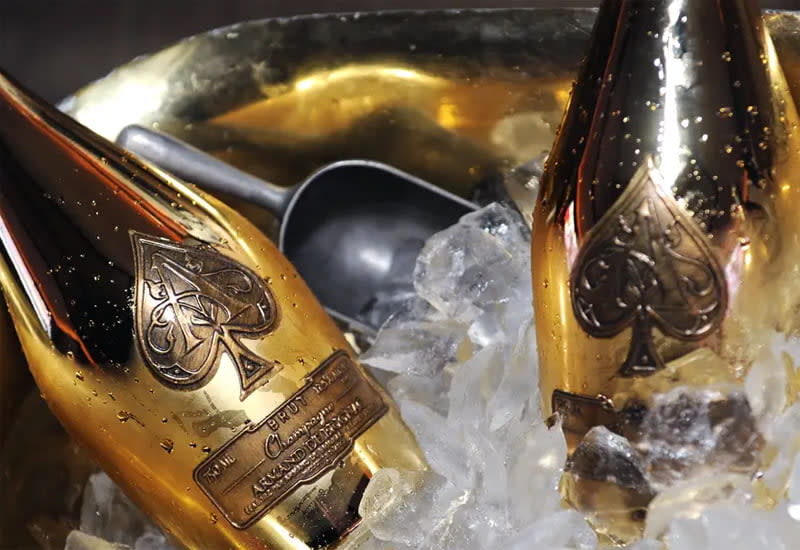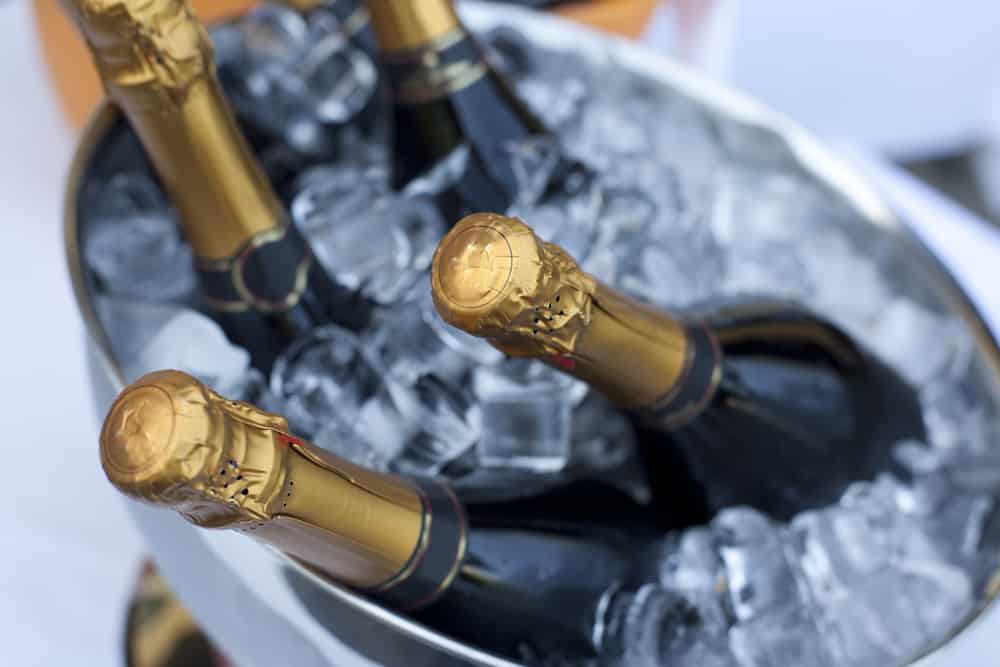Champagne is a celebratory wine, but improper storage could quickly degrade its quality.
Unopened bottles of Champagne can last up to one week in the fridge if stored upright and sealed properly.
Temperature
Champagne is an ideal drink to mark special events. Refreshing and light with just a hint of sweetness, champagne makes a delicious celebratory beverage. However, when stored incorrectly or consumed outside its recommended timeframe it can quickly go bad, leading to unpleasant flavors and loss of fizz. In order to ensure fresh sparkling wine for longer than ever it is important that people understand how long champagne lasts and the steps necessary to preserve its freshness.
Champagne should be stored between 40 and 50 degrees Fahrenheit for optimal storage conditions when it is unopened, on its side to prevent oxygen entering through its cork, and out of direct sunlight, which could fade the label and affect quality. A wine fridge provides optimal conditions to ensure consistency of temperature and prevent fluctuations that might result in flat champagne.
After opening a bottle of champagne, its fizz will only last three to five days before starting to degrade in aroma and flavor. To get the most from your bottle and prolong its fizziness, seal it using either plastic wrap or with a champagne stopper and store in the fridge as soon as you open. Likewise, try serving immediately upon opening so as to maximize fizz!
If you don’t own a wine fridge, an ice water bath can quickly chill Champagne or other sparkling wines to their appropriate temperatures between 43 to 48 degrees Fahrenheit. Wrapping the bottle in a wet tea towel before placing it into an ice water bath can also speed up chilling time than simply placing it into the fridge. Alternatively, a bucket filled with ice and cold water may work just as effectively!
Bottle Position
If you have unopened Champagne on hand that you haven’t opened yet, the good news is that it can remain fresh and fizzy for three to five days before starting to lose its quality and flavor. At this point, its fizz will begin dissipating, leading to diminished quality and taste – you can tell if its gone bad when its scent turns vinegary while its taste becomes flat and stale.
Store Champagne correctly if you want it to stay at its peak condition and ensure its shelf life lasts as long as possible. A dark and cool place at a steady temperature will do best as exposure to sunlight or fluctuating temperatures can accelerate its aging.
When storing Champagne, it’s best to lay it flat rather than standing it upright to protect its cork from drying out and allowing oxygen into the bottle. Furthermore, placing it somewhere that won’t be frequented often by people can keep temperatures low while also darkening the atmosphere – consider placing in either your kitchen cupboard or basement depending on construction plans for optimal storage conditions.
Champagne needs to be kept away from light as both natural and artificial light can damage it, known as “light strikes”, which may cause it to taste like wet cardboard or mushrooms – especially if stored in clear glass bottles.
Once your Champagne has been sealed and stored in the fridge, it should be consumed within two to three days for optimal results. If there are any leftovers, placing a spoon inside its mouth before refrigerating may help ensure it keeps cold while maintaining its fizz.
Vintage Champagne may outlive non-vintage Champagne in terms of longevity; however, its freshness will diminish after around 10 years due to using grapes from one harvest year, as opposed to non-vintage Champagne which often blends harvests from multiple years into its blends.

Cork
Champagne requires special conditions to retain its fizz, with cork being an integral component of its bottle that keeps oxygen flowing into it and keeping bubbly bubbly. Cork is made from waterproof and buoyant material harvested from Quercus suber trees native to southwest Europe and northwest Africa with long life cycles and minimal environmental impacts; cork products have also become sustainable products over time.
Champagne lasts longer when stored properly in a cool and dark environment, as this helps preserve its sparkling qualities and texture. Furthermore, placing the bottle on its side allows more oxygen into the bottle thereby prolonging its shelf life. Ideally a wine fridge provides the optimal conditions for keeping Champagne safe.
An unopened bottle of Champagne may remain fresh for up to five days in the refrigerator if sealed with either a Champagne stopper or regular cork and placed there, though its best when enjoyed immediately upon opening as its bubbles and flavors start dissipating with time.
Champagne bottles that have been placed into storage depend on their vintage. Vintage Champagnes may last from several years up to ten, provided that it remains in excellent condition when opened for consumption. Non-vintage Champagnes usually don’t age as well (although there may be exceptions).
Ascertaining when champagne has gone off is simple by looking at its appearance and aroma as well as tasting some drops. If it smells or tastes unpleasant, the Champagne has lost its quality and should be discarded immediately.
Champagne should only ever be enjoyed as part of celebrations; but, if you find yourself with any leftover Champagne, don’t dump it down the drain; rather use it creatively by creating new cocktails with it or cooking with it – even making mimosas with it! For more ideas about ways to reuse Champagne visit 2020 Woman founded Goldune website which offers sustainable products designed to reduce environmental impact while prolonging enjoyment.
Storage
Champagne should be stored in a cool and dark environment to prevent premature aging of its bottles. Many wine enthusiasts keep their champagne in a cellar; however a wine refrigerator or even a cold closet is sufficient. Intense sunlight may cause it to develop 5-HMF compounds, leading to early spoilage of bottles of bubbly; refrigeration can prevent this from happening and prolong their shelf-life.
Unopened bottles of Champagne typically last anywhere from five to ten years when left in their original state, depending on brand and style. Vintage Champagnes that were designed specifically to age will typically outlive non-vintage Champagnes by some margin.
Champagne should not be stored in the fridge as temperature fluctuations can alter its chemical makeup and alter its taste; experts advise storing Champagne in a dark and cool location for maximum longevity.
As well as keeping them stored in a cool, dark area, you should also protect your champagne from sunlight as the UV rays can cause it to oxidize and lose freshness, hence why dark bottles like Roederer’s Cristal are sold. Furthermore, transparent Champagne bottles should be kept covered by black fabric or foil sheets and their original boxes when possible for optimal storage conditions.
Your storage area must also be free from strong odors; otherwise, chemicals emitted by cooking, smoking and cleaning products could affect its taste. If possible, use an airtight seal to keep your Champagne stored away for as long as possible in a dark, cold and odorless space.

